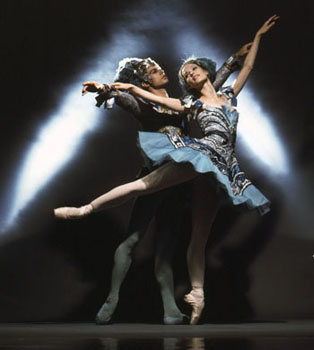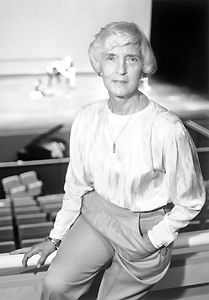Daniel Williams Grossman, dancer, choreographer (born 13 September 1942 in San Francisco, California; died 29 July 2023 in Toronto, ON). Daniel Grossman was one of Canada’s greatest choreographers. He was known for weaving themes of social justice into his dance and for choreography that was equal parts athletic, humorous and satirical. He founded the Danny Grossman Dance Company (DGDC) in 1975 and taught for many years at York University. He received the Jean A. Chalmers Award for Choreography, the William Kilbourn Lifetime Achievement Award from the Toronto Arts Awards and the Dance Ontario Award. He was an inaugural inductee of Canada’s Dance Hall of Fame in 2018.
Daniel Grossman
Dancer Daniel Grossman in the Paul Taylor production of Agathe’s Tale in 1967.
(photo by Jack Mitchell, courtesy Getty Images)
Early Life and Career
The son of a Polish-Hungarian Jewish father and an Irish Catholic mother, Daniel Grossman grew up in a highly politicized household. He walked his first picket line when he was 10 and participated in student demonstrations at the University of California, Berkeley. Affected by his upbringing, Grossman's choreography dealt with themes such as racism, sexuality, war and human conflict, poverty, respect for nature and personal spiritual growth. However, his work was not restricted to serious social commentary; his athletic choreography was frequently humorous and satirical.
Grossman began folk dancing in grade school. By 1960, he was studying and performing modern dance with Gloria Unti. In 1963, at a summer course at Connecticut College, he met Paul Taylor, who invited him to join his company in New York City. Grossman danced with Taylor from 1963 to 1973, touring throughout the world.
Career Highlights
In 1973, Daniel Grossman was invited to work as a guest artist with the Toronto Dance Theatre. He then chose to remain in Canada. In 1974, he joined the faculty at York University while continuing to work with TDT. A single work, Higher, made at York University in 1975, led to the formation of the Danny Grossman Dance Company (DGDC) that same year. Higher is a work of playful sexual tension in which a man and a woman dance on and around two chairs and a ladder to the music of Ray Charles.

The mid-1970s were prolific years for Grossman. Many of his early works have been retained in the company repertoire. In 1976, he created four new pieces: Couples Suite, National Spirit, Fratelli and Triptych. National Spirit, about American patriotism, was his first political satire. In 1977, he produced three works: in Curious Schools of Theatrical Dancing, his first solo, a paranoiac is involved in a physically dangerous dance to the death; Ecce Homo is based on religious paintings and drawings of ecstasy and sin; and Bella, a collaboration with Judy Jarvis, was inspired by the music of Puccini and Chagall's paintings of lovers.
Other notable pieces include the apocalyptic Endangered Species; the tongue-in-cheek Nobody's Business; the very dark Ces Plaisirs, after Collette's book The Pure and the Impure; and La Valse, a sarcastic look at poverty and wealth.
Concerned with preserving dancing as an artform, Grossman and his company remounted works by Canadians Patricia Beatty, Anna Blewchamp, Paula Ross, Judy Jarvis and Peter Randazzo. Also concerned with educational outreach, the DGDC drew on the varied backgrounds of its dancers to offer workshops and lecture/demonstrations, working frequently with public schools and post-secondary dance programs.
Daniel Grossman in 1973
New York Dancer Daniel Grossman came to Toronto to teach and decided to stay.
(photo by Dick Darrell, courtesy Toronto Star via Getty Images)
Other Activities
A cultural activist, Grossman served on the Board of the Toronto Arts Council. He participated in Toronto's Artsvote campaign to educate local voters and politicians about cultural issues. He was an Adjunct Professor in the Department of Dance at York University.
Honours
Daniel Grossman received the Jean A. Chalmers Award for Choreography (1978), a Dora Award for Best New Choreography (1988), the William Kilbourn Lifetime Achievement Award from the Toronto Arts Awards (1998) and the Dance Ontario Award (1998). He was also an inaugural inductee of Canada’s Dance Hall of Fame (2018).
See also Dance in Canada; Folk Dance; Modern Dance; Recreational Dance; Dance and the Media; Dance Education.

 Share on Facebook
Share on Facebook Share on X
Share on X Share by Email
Share by Email Share on Google Classroom
Share on Google Classroom










